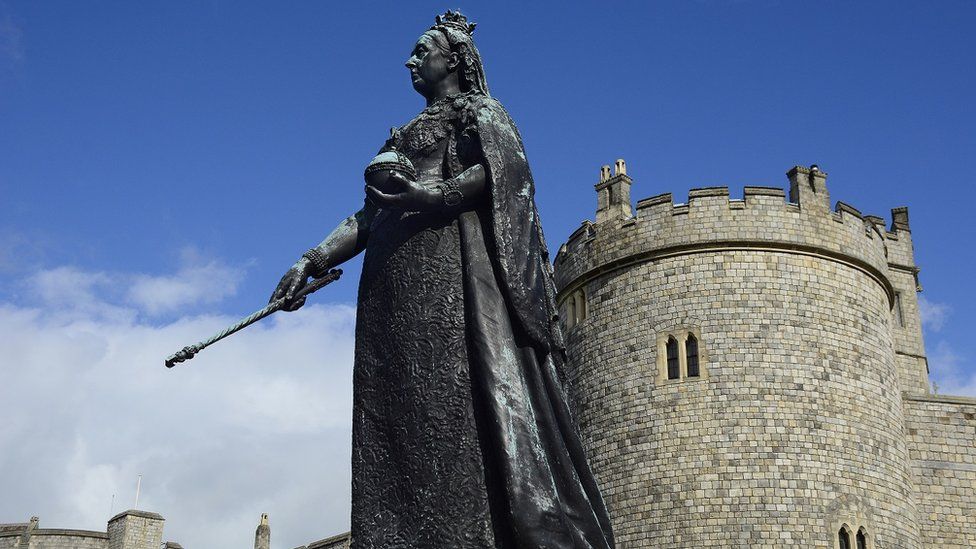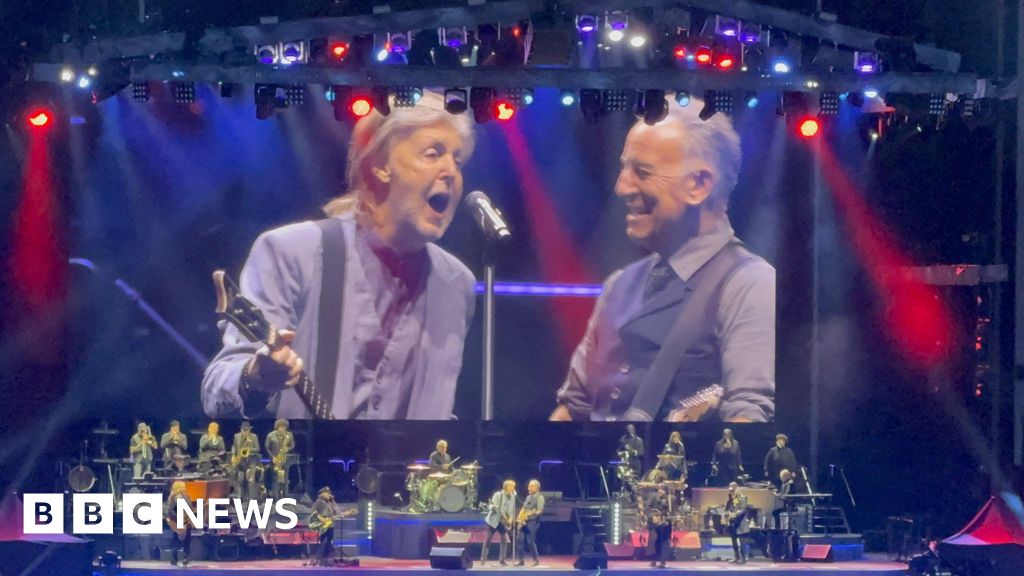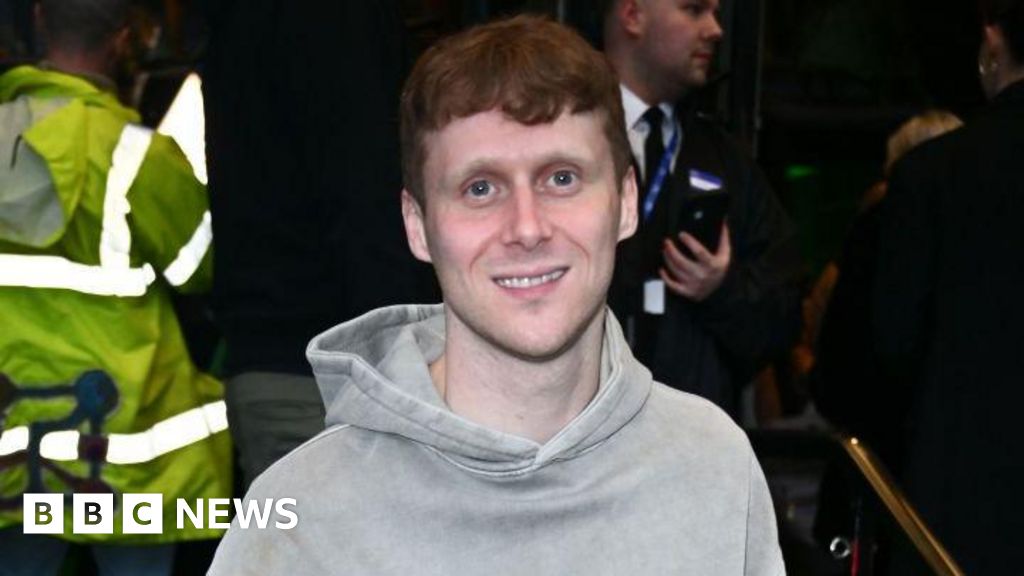ARTICLE AD BOX
By David Sillito
Arts correspondent
 Image source, Getty Images
Image source, Getty Images
There are more statues of Queen Victoria than anyone else - this one at Windsor Castle is one of 175 to honour her
The first ever online catalogue of the UK's statues has been unveiled.
The charity ArtUK has created a photographic database of 13,500 works of public art.
Queen Victoria is the most honoured person with 175 works dedicated to her. The data also shows 77% of people depicted are male, 17% female and the rest a mixture of the sexes.
The catalogue, which is now available online, also reveals there more than 20 statues to dogs and cats.
Here are a few of the statues with a story to tell.
1. Queen Victoria still reigns
Image source, Alamy
Image caption,One statue of Queen Victoria in Salford shows her as a younger woman
The most honoured person in Britain is a woman - Queen Victoria has 175 statues and memorials erected in her name.
This statue (above) in Salford is one of the few to portray her as younger woman.
It was erected after the Queen's visit to Manchester and Salford in 1851. Most of the other Queen Victorias were installed in the 1890s and 1900s.
However, men still outnumber women by more than four to one.
There are more than 100 generals and more than 50 admirals. Lord Nelson has 12 statues, Gladstone six.
Much has been done in recent years to try to improve the gender disparity.
Image source, Getty Images
Image caption,US novelist Tracy Chevalier paid her respects to Mary Anning after the unveiling of her statue in May
One recent installation is Mary Anning, the fossil hunter, in Lyme Regis.
The work, by artist Denise Dutton, is just the latest in a series of women she has recently portrayed, among them the suffragette, Oldham's Annie Kenney and a memorial to the Women's Land Army.
"There's just been a thrust over the last couple of years to show what women have done," she says. "I wanted to show she was a woman of purpose. I wanted her striding off. She was quite determined."
One problem in capturing a likeness is how often women were overlooked in their time and did not receive official portraits. There is just one painting and one pastel of Mary Anning to work from.
The likeness of her dog Tray came from Anning's own sketch.
2. The Brown Dog of Battersea
In March 1910, Battersea Council removed the statue under cover of darkness, after which it was reportedly melted down despite a 20,000-strong petition in its favour. A new statue of the brown dog, commissioned by anti-vivisection groups, was erected in Battersea Park in 1985. pic.twitter.com/hA92vKLdQ9
— English Radical History (@EnglishRadical) December 10, 2020The BBC is not responsible for the content of external sites.View original tweet on Twitter
When protesters in Bristol tore down the statue of Edward Colston because of his links to slavery, it made headlines.
The catalogue reveals that there are still a few remaining memorials to people with close links to the slave trade.
This number might go up as more biographical detail is added to the entries.
However, this was not the first time a statue had led to public outrage. In 1906, a statue of a small brown terrier was erected in Battersea.
Image source, Historic England Archive
It was a memorial to a dog that had been dissected in a medical demonstration.
The statue led to years of protests, rioting and eventually the original brown dog being removed in the middle of the night in 1910. A replacement statue was erected in 1985.
3. Where's Steve?
Image source, ArtUK
Image caption,One foot belonging to runner Steve Ovett is all that remains of a statue which was stolen in 2007
The empty plinth of Edward Colston is not the only missing statue in the catalogue.
This foot belonging to the runner gold medal winning, middle distance runner, Steve Ovett.
The statue in Brighton was stolen in 2007.
A new Steve was installed on Brighton seafront in 2017, but it is far from the only statue to have been taken.
4. Dudley the Cat
Dudley the Cat is one of more than 20 cats and dogs to receive their own statue.
Dudley, however, is also a memorial to his owner, Liz Burrows.
Liz lived by the Union Canal in Linlithgow and was a leading figure in Burgh Beautiful, a programme to enhance the local area.
When Liz died in 2012, this sculpture of her beloved rescue cat, Dudley was erected in her honour.
5. The Duke of Wellington (with traditional traffic cone)
Image source, Getty Images
Image caption,A traffic cone has become part of the Duke of Wellington statue in Glasgow
Yes, the catalogue's official portrait of The Duke of Wellington in Exchange Square in Glasgow has him wearing a traffic cone.
Erected in the 1840s, the statue of the Duke on his horse, Copenhagen, stands outside the city's modern art gallery.
However, in recent years he has regularly been seen wearing a traffic cone, and at one point a blue and yellow knitted cone in support of Ukraine.
All attempts to free him of his plastic headgear are quickly thwarted. The cone has become part of the artwork.
6. One Kangaroo
Beyond famous cats and dogs, there are many animal statues.
Cardiff has Billy the Seal, Scotland has two statues of Corporal Wojtek the soldier bear in Edinburgh and Duns.
Wojtek was adopted by the Polish army and is said to have helped carry ammunition during the Battle of Monte Cassino.
There is, however, according to the catalogue only one kangaroo in Hobart Place, Melbourne, Chelmsford.
However, the catalogue is still being added to so if someone discovers a second kangaroo ArtUK would be glad to hear.

 2 years ago
41
2 years ago
41








 English (US) ·
English (US) ·